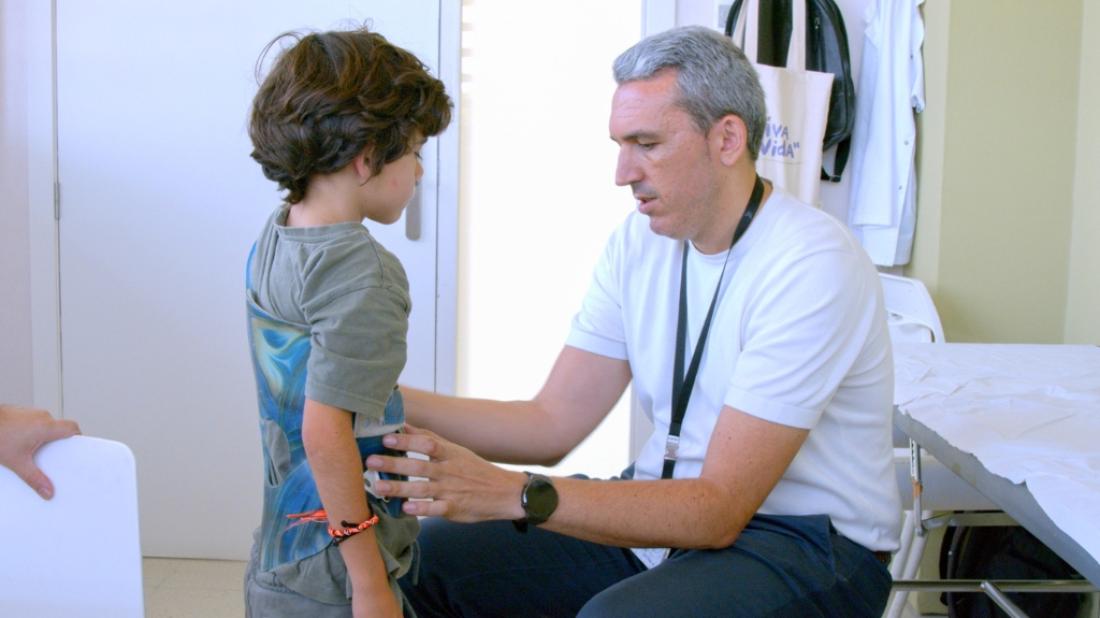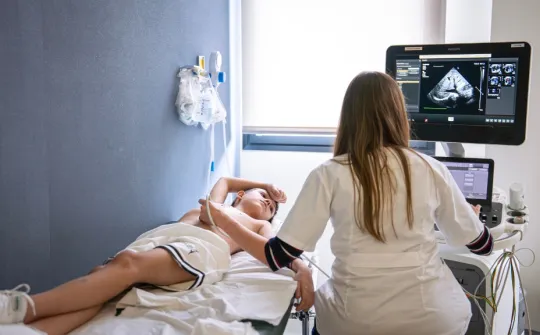A study led by the SJD Barcelona Children's Hospital is changing treatment for idiopathic scoliosis in adolescents

The study, pioneering in its analysis of nighttime corset use versus daytime use, has been recognised as best research project by the Scoliosis Research Society.
A team of specialists from the SJD Barcelona Children's Hospital have conducted an international study that transforms treatment of idiopathic scoliosis for children and adolescents. The research project, with a cohort of 78 patients between 10 and 18 years old, compared daytime and nighttime use of a corrective corset brace. Although these corsets may have some minimal physical differences, the main difference between them is how they react on a biomechanical level.
Corsets have been traditionally prescribed for daytime use, to be worn at least 18 hours per day. This has a significant emotional impact on young people, especially in their academic and social lives. The new study, recognised by the Scoliosis Research Society (SRS), shows that nighttime corset use is just as effective at slowing scoliosis progression, but it has a lesser psychological impact on the patient.
Doctor Alejandro Peiró, Principal Investigator of the study and Head of the Pediatric Spinal Surgery Unit at the SJD Barcelona Children's Hospital explains that the hypothesis arose when, after returning from a trip to Canada, where daytime corsets are typically prescribed, he saw that the results of his patients in Barcelona—who mostly used their brace at night for weather reasons—were similar. However, there was no scientific evidence to support the hypothesis.
Two-year follow-up
Over the course of two years, the research team performed weekly X-rays, quality of life questionnaires, and they implemented thermal sensors to monitor real-time adherence to treatment by the 78 children and adolescents. Data show that patients who use the corset during the day wear it for an average of 11 hours, whereas those who wear it at night, average at eight hours of use. This suggests that there is little difference made by time worn, but that clinical progress is similar.
‘Now we have solid scientific grounds to recommend nighttime corset use as an effective treatment method for idiopathic scoliosis in adolescents’, remarks Dr Peiró. ‘We know that it is just as effective and, psychologically speaking, has a much lesser impact on adolescents.’ This finding has a huge impact on the quality of life of young people, as scoliosis normally manifests in puberty—a time of particular emotional and physical vulnerability—coinciding, at times, with growth spurts and menstruation.
The study also confirms that while a corset brace does not usually revert scoliosis, it does effectively slow its progression in most cases. In fact, according to the team’s data, only one or two in every 10 patients treated on time end up needing surgery. This reinforces the importance of early diagnosis and intervention, which, compared to many other countries, is done much more efficiently in Spain.



